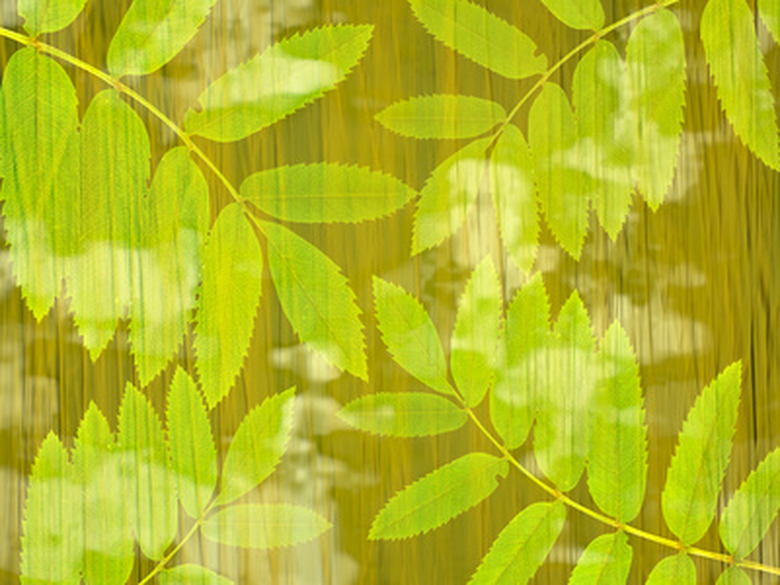Uses Of Ash Trees
The ash tree (Fraxinus) is a member of the Oleaceae or olive family. Ash species are characterized by opposite branching, feathery flowers and compound leaf groupings, with seven or more smooth or toothed leaves per group. The most common ash species, including white, green, blue and black ash, have bark that is smooth and gray when the tree is young and furrowed as the tree matures. The trees have landscape uses and the wood is valuable for a number of applications.
Landscape Use
Green ash and white ash in particular are popular landscape trees because they are widely adaptable. They are used as street trees, as well as in parks, golf courses and other public spaces. In general ash is desirable because it is fast-growing. Many species and varieties also have excellent fall color. In the 21st century ash trees have been decimated by the emerald ash borer, making them less common in American landscapes.
- The ash tree (Fraxinus) is a member of the Oleaceae or olive family.
- The most common ash species, including white, green, blue and black ash, have bark that is smooth and gray when the tree is young and furrowed as the tree matures.
Use as a Habitat
White ash and green ash provide food, in the form of fruits and seeds, for birds such as finches and cardinals.
Baseball Bats
With light, strong wood, white ash has long been a popular material for the construction of baseball bats. The same qualities make it valuable for other sports equipment like hockey sticks and polo mallets.
Canoe Paddles
As white ash has become less available and more expensive, green ash has become popular for use in oars and canoe paddles.
Medicinal Use
Before the 20th century, herbalists used parts of ash trees as tonics and diuretics. Pliny, the ancient Roman naturalist, cited the ash tree as a snake repellent. Many other cultures also have legends about ash trees and snakes, and ash leaves were sometimes stuffed into hunters' boots or pockets to ward off the poisonous reptiles. The Elizabethan herbalist John Gerard recommended combining juice extracted from ash leaves with wine as a snakebite remedy.
- White ash and green ash provide food, in the form of fruits and seeds, for birds such as finches and cardinals.
- Before the 20th century, herbalists used parts of ash trees as tonics and diuretics.
Seed Use
Seeds collected from ash trees are valuable as part of the National Ash Tree Seed Collection Initiative. This effort, sponsored by the Rose Lake Plant Materials Center in Michigan in cooperation with the U.S. Department of Agriculture, seeks to preserve ash species given the threat the ash borer poses. Collected seed will be stored at the National Center for Genetic Resources Preservation in Fort Collins, Colo.
Use as a Food
The fruits of the ash tree are edible and have sometimes been salted, pickled and used to garnish or season food in the same way as capers.

